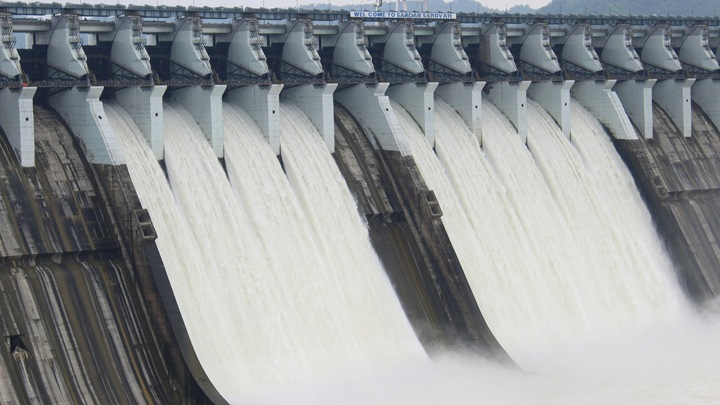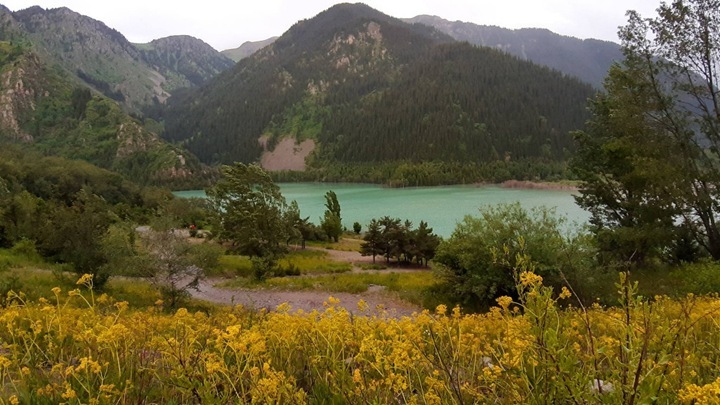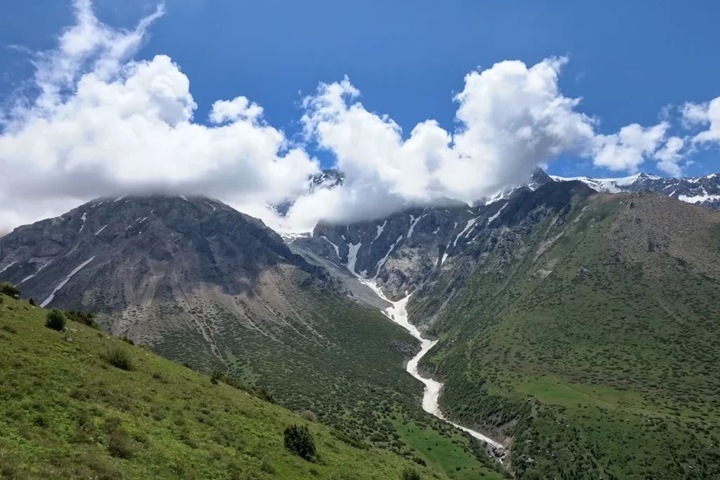Kazakhstan approved the rules for the inspection of hydraulic structures
The Minister of Water Resources and Irrigation of the Republic of Kazakhstan, by order dated June 27, 2025, approved the Rules for conducting a multifactorial survey of hydraulic structures and the forms of their safety declaration, which entered into force on July 4, reports Zakon.kz .

For hydraulic engineering structures (GTS) that pose an increased danger in emergency situations of a natural and man-made nature, defined in the GTS safety regulations, a technical condition survey is carried out as part of a multifactorial survey.
A multifactorial examination is conducted every five years. The report of the five-year period begins on the date of registration of the previous declaration.
To conduct a multifactorial survey, the owner determines the safety criteria of the GTS and annually monitors their compliance.
Based on the results of a multifactorial examination of the GTS, a declaration of GTS safety is being developed.
The implementation of a multifactorial survey and the development of a declaration are carried out by the owner (owner) independently or at the expense of his funds by a third-party organization certified by the authorized body in the field of protection and use of the water fund for the right to carry out work in the field of GTS safety.
At the same time, in the case of a multifactorial examination and the development of a declaration by the owner (owner) independently, the results of the multifactorial examination and the declaration are subject to examination in an organization certified for the right to carry out work in the field of GTS security, at the expense of the owner.
In the case of a multifactorial survey and the development of a declaration by a certified organization, the examination of the work performed and the declaration are carried out by another certified organization.
The declaration is subject to registration with the basin water Inspectorate in the field of protection and regulation of the use of water resources.
To assign a registration code to the declaration, the applicant submits an application and a copy of the declaration together with a copy of the expert opinion to the basin water Inspectorate.
The Basin Water Inspectorate, having considered the submitted documents, decides on the registration of the declaration or submits a reasoned refusal.
A copy of the registered declaration is kept in the basin water inspection.
The list of GTS and organizations that have registered declarations is posted on the Internet resource of the authorized body.
Multifactorial inspection of hydraulic structures includes a visual inspection and a set of engineering studies.
The main task of the visual inspection of the GTS is to identify defects and damage to structures, malfunctions of structures and mechanical equipment, abnormally large sediments, deformations, displacements, zones and areas of destruction of the material of structural elements, open outlets of the filtration stream, as well as assessing the condition of the installed instrumentation (KIA), evaluating the effectiveness of the performed repair measures.
Visual inspection of the mechanical equipment of the GTS determines the mechanical and corrosion damage of traction ropes, chains, supporting structures, linings, running gear and other mechanisms, bearing metal structures, the condition of concrete in the places of attachment of embedded parts and supports of crane track superstructures, the quality of gate seals.
In turn, the complex of engineering research consists of geodetic, geophysical, geotechnical and underwater research.
The main objective of the geodetic research is to check the security of the geodetic network, the presence and condition of surface and soil marks, conducting executive surveys of objects and adjacent territories with high resolution, as well as analyzing the stability of reference points and marks over time, taking into account possible tectonic and seasonal shifts.
The main task of geophysical and geotechnical research is to obtain quantitative data on the condition of the structure: deformations, strength, cracking and humidity. In the case of underground or mountain conditions, additional geomechanical studies of the stability of the surrounding massif are carried out.
The main task of the underwater study is to check the condition of the underwater part of the upper and lower reaches of the structure and adjacent sections of the bottom. The survey of the underwater part of the GTS is carried out during the period of the least standing water. It also clarifies the presence of signs of washouts, erosion craters, secondary currents affecting the stability of the base of the structure.
The document also contains a list of objects of visual inspection and damage, defects and data detected and recorded during a multifactorial inspection of hydraulic structures.
So, at the GTS, which has concrete and soil dams, a hydroelectric power station building, navigable locks and spillway facilities as part of the pressure front, visual inspection facilities include:
- ridge, berms, slopes (faces) of dams;
- drainage devices;
- spillway surfaces of spillway structures;
- structural elements of these structures from the downstream side, including a water well and walls, energy dampers, apron and bucket (within the limits available for inspection);
- turbine water lines, including anchor supports;
- equalizing tanks;
- bulls, separate walls, abutments, retaining walls;
- areas where concrete structures are adjacent to ground structures and shores;
- galleries arranged in the banks, in the body and base of the dam;
- supply and discharge channels;
- underground structures and workings;
- sections of coastal slopes and territories adjacent to the lower slope (face) of the dam, the building of the hydroelectric power station, the lower portals of tunnels, navigable structures;
- abrasive zones of the banks in the upper and lower reaches within 500 meters from the coastal abutments;
- anti-wave and other slope fastenings;
- conducting a hydrographic survey of the coastal and underwater part of the structures (if there is a reservoir), including a depth map, bottom relief, siltation zones and potential areas of erosion of the dam base;
- GTS mechanical equipment;
- assessment of the technical condition of the elements of spillway structures using unmanned aerial vehicles (drones) (hereinafter referred to as UAVs) and laser scanning for hard–to-reach areas.
In the concrete parts of the GTS (dams, retaining walls), during visual inspection, the following main types of damage to the concrete masonry are detected and recorded:
- corrosion of concrete caused by contact with an aggressive environment or water filtration;
- the presence of through cracks in the concrete masonry, which are foci of concentrated filtration;
- intensive leaching of concrete (leaching of lime from it with filtered water);
- corrosion of concrete surface parts of structures due to temperature influences in winter (freezing-thawing) and summer (heating-cooling) periods, including exposure to solar radiation;
- corrosion of water-saturated concrete in the zone of variable water level due to alternating freezing and thawing in winter;
- destruction of concrete culverts due to cavitation or waterjet wear;
- mechanical damage to concrete masonry (chipped corners of elements, fragmentation of concrete in separate zones, cracks, peeling);
- irreversible opening of seams due to temperature and other influences (subsidence of the base, earthquakes);
- cracks caused by power loads, uneven precipitation or temperature influences;
- if there is access — inspection of shrink and process joints for their tightness, as well as monitoring the condition of sealing materials;
- cracks caused by the reaction of cement alkalis with aggregates containing active silica;
- introduction of photofixation of recurring cracks with reference to geodetic marks for the analysis of the dynamics of their development.
In reinforced concrete and steel-reinforced concrete structures of the GTS, the following damages are additionally detected and recorded:
- vertical, horizontal and inclined cracks in the stretched zone of the element with an opening value greater than that allowed by the norms;
- cracks along the compressed zone of the element, including in the ridge of the gable beams;
- loss of protective properties by concrete in relation to reinforcement (carbonization of concrete to the entire thickness of the protective layer, leaching of concrete);
- cracks in the protective layer of concrete along the reinforcement rods and detachment of the protective layer of concrete;
- in the presence of cladding — analysis of adhesion to the concrete base, especially in places with constant moisture;
- corrosion of fittings;
- mechanical damage to the armature;
- control using non-destructive methods (ultrasound, magnetic control) of the condition of reinforcing outlets in high-load areas;
- damage to the steel lining (corrosion of metal and seams, cracks, reduction in thickness due to abrasion, contact with the surrounding reinforced concrete massif).
The full list can be viewed at the link.
The order has been in effect since July 4.
Original (in Russian): В Казахстане утвердили правила обследования гидротехнических сооружений


